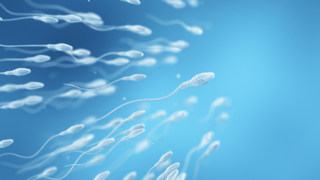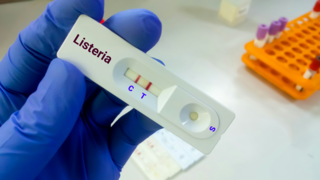What is lochia?
Lochia is the medical word for postpartum bleeding. While this is a straightforward explanation, your body sheds more than just blood. The fluid is composed of mucus, blood, and leftover placental cells. It also contains sloughing of the uterine lining. Lochia mainly comes from the site at which the placenta detached from the uterine wall during birth.You should anticipate lochia to be thicker than your typical period, and it will most likely linger longer. And the good news is that whatever lochia you're feeling will eventually lighten in both flow and colour. This is a typical progression that implies you're progressing through the various lochia phases.
Lochia stages:
Lochia is normal during the postpartum period, and although it's not the best addition to the fourth trimester, any severe bleeding normally goes away after a few days.Here are the three lochia phrases you should be aware of:
Lochia rubra:
You can expect copious, dark crimson or bright red bleeding that may include tiny clots shortly after the baby is born. This is the first lochia stage, known as lochia rubra (red). Those hospital pads may seem large and heavy, but you'll be happy for them during the early stages of lochia. It is also normal to have severe uterine cramps within the first several days. Lochia rubra normally lasts three to four days after delivery, following which the second stage, lochia serosa, begins.Lochia serosa:
You will still be bleeding throughout the second stage of lochia, but it will most likely be considerably less severe. To summarise, the lochia serosa stage is substantially less aggressive. Bleeding usually becomes lighter during this time, and you'll notice the colour of your bleeding can change from a light red to a watery pink-brownish colour. Most new mothers have lochia serosa for a longer period of time than lochia rubra; this stage typically lasts from day four to day ten after giving birth.Lochia alba:
Finally, the lighter bleeding of the lochia serosa stage will fade into discharge; the lochia colour will become more yellowish, although it may still be accompanied by spotting. This is the last lochia stage, known as lochia alba, and it may linger for up to six weeks following birth.How long does bleeding after birth last?
Of course, you're undoubtedly anxious to move on and enjoy the early days with your child without the hassle of postpartum lochia. Lochia after birth, like other aspects of the pregnancy, delivery, and postpartum experience, varies from person to person. And it happens regardless of how you deliver: lochia may occur after a vaginal delivery as well as a C-section. Bleeding following both vaginal and caesarean deliveries may linger for up to five or six weeks. If you're still bleeding after six weeks, talk to your doctor. Rest confident that lochia should be substantially decreased by the six-week mark.What does an abnormal lochia discharge look like?
You're probably aware that lochia varies significantly for each new mother. Of course, you may still be wondering what scenarios may cause worry about postpartum bleeding. Signs of abnormal lochia discharge may include:
Lochia has a foul scent:
The lochia smells normal, however it takes on a musty odour comparable to menstrual blood. However, if the lochia smells nasty, it may suggest an infection. It might be difficult to discern between odours, but if you detect a significant shift in the scent of your discharge, contact your doctor.Lochia exhibits fever and/or soreness:
Any fever that develops after your baby is born should be examined by your doctor since it might signify the onset of an illness.Lochia suddenly gets quite heavy:
As previously mentioned, a rapid shift in your bleeding pattern after delivery usually indicates that you were too busy too quickly. Try to relax (we understand that this is easier said than done). In any case, it's important to keep a watch out for unexpected heavy bleeding, which may be a symptom of subinvolution or a severe haemorrhage; if you're soaking a pad every hour or two or passing huge clots, get medical attention immediately.How to deal with postpartum bleeding?
Although it may not be pleasant, bleeding after delivery is completely normal. And before you know it, those first few physically challenging postpartum weeks will be over, and you'll start feeling more like yourself again. Meanwhile, try to make yourself as comfortable as possible to help you cope with lochia. Ensure you have plenty of overnight pads available, and have some disposable underwear ready at home. You should be able to switch to light or tiny pads in a few days. Just don't use tampons for lochia; nothing should enter your vagina for at least six weeks after delivery.FAQs on Postpartum Lochia: What to Expect With Normal Bleeding After Birth?
- What kind of bleeding is normal after delivery?
Bleeding typically lasts four to six weeks, but it may last up to twelve weeks after your baby is delivered. If you are concerned, you may consult a health practitioner. Bleeding will first be strong and crimson, progressing to brownish red. It will lighten in colour and flow with time. - How can you know whether the postpartum bleeding has stopped?
Your lochia will now be a milder pink tone rather than a vivid red. Furthermore, you should be able to use fewer maternity pads and maybe transfer to a regular sanitary pad.











